



Table of Contents
- Introduction
- Benefits of Having a Globally Inspired Living Space
- Embrace Cultural Elements
- Use Worldly Colors and Patterns
- Furniture Choices
- Textures and Materials
- Faq's
Introduction
Transforming your room decor to reflect an international style can breathe new life into your living space. By integrating cultural elements from around the world, you can create a unique, vibrant, and diverse environment that mirrors the beauty and richness of global traditions. Whether it's the minimalistic elegance of Japanese design, the vibrant hues and intricate patterns of Middle Eastern decor, or the classic sophistication of European styles, international room decor offers endless possibilities for personalization. This guide will provide you with tips and inspiration to help you incorporate global influences into your home, creating a space that is both stylish and culturally rich.
Benefits of Having a Globally Inspired Living Space
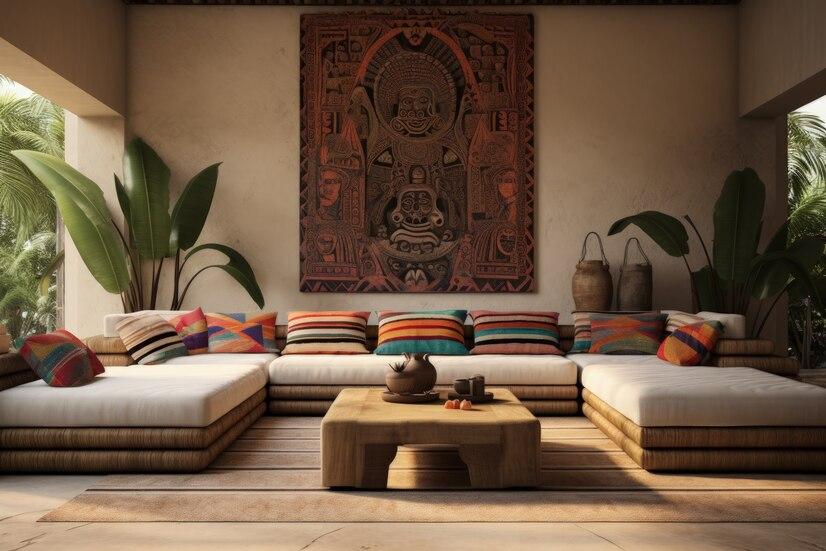 International room decor
International room decor
Cultural Enrichment: A globally inspired living space introduces you to diverse cultures and traditions. It's like having a mini world tour within your home, offering a daily reminder of the beauty and diversity of our planet.
Unique Aesthetic: By combining elements from different parts of the world, you can create a one-of-a-kind aesthetic that stands out. This eclectic mix adds depth, character, and uniqueness to your living space.
Personal Expression: Incorporating global influences allows you to express your personal experiences and interests in travel and culture. Your space becomes a reflection of your journey, preferences, and the places you love.
Conversation Starter: Unique and culturally rich decor items can serve as great conversation starters. Guests will be intrigued by the stories behind the pieces, leading to engaging and meaningful conversations.
Enhanced Comfort and Functionality: Many international design elements prioritize comfort and functionality. For instance, the Scandinavian concept of 'hygge' emphasizes coziness, while Japanese minimalism focuses on simplicity and space efficiency.
Inspiration and Creativity: Being surrounded by diverse cultural elements can spark creativity and inspiration in daily life. It can influence your approach to art, cooking, fashion, and other creative endeavors.
Well-being and Mindfulness: Certain global design philosophies, such as Feng Shui from China or Wabi-Sabi from Japan, focus on harmony and balance, contributing to a peaceful and mindful living environment.
Appreciation for Craftsmanship: Many global decor items are handcrafted, reflecting a high level of artistry and craftsmanship. Owning these pieces fosters an appreciation for traditional techniques and artisanal skills.
Sustainable Choices: Opting for authentic, handmade items from different cultures often means supporting sustainable practices and local artisans, contributing positively to communities worldwide.
Educational Value: A globally inspired living space can be educational, offering insights into different cultural practices, histories, and values. It can be a valuable learning experience for both adults and children in the household.
Embrace Cultural Elements
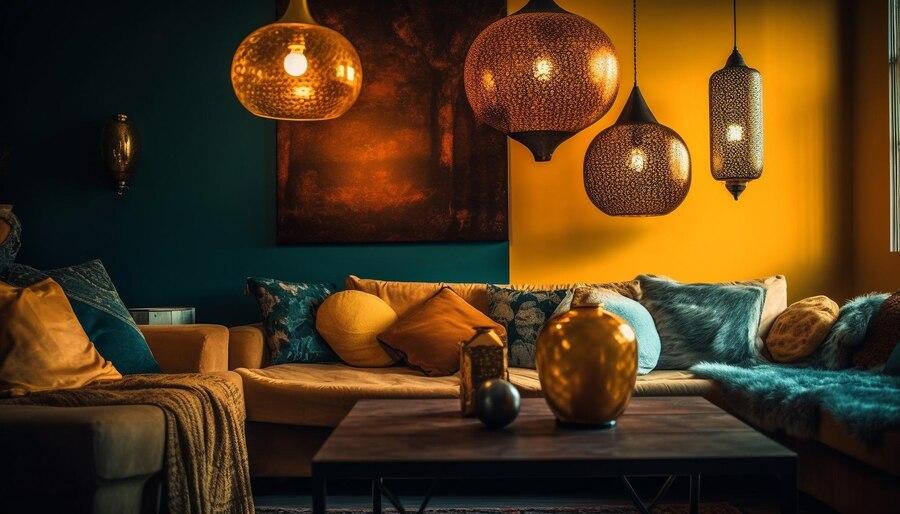 Global-inspired living space
Global-inspired living space
Textiles and Fabrics: Introduce textiles and fabrics from different cultures, such as Persian rugs, Indian tapestries, or African mud cloths. These items not only add color and texture but also tell a story of the artisans who crafted them.
Art and Decor: Decorate your walls with art pieces and decorations from around the world. This could include Japanese woodblock prints, Native American pottery, or Latin American folk art. Each piece can bring a unique cultural flair to your space.
Furniture Styles: Incorporate furniture pieces that reflect global design aesthetics. Consider a Moroccan pouf, a Scandinavian minimalist chair, or a French provincial table. Mixing these styles can create a harmonious and eclectic look.
Lighting: Use lighting fixtures that embody different cultural styles, such as a Turkish mosaic lamp, a Chinese paper lantern, or an Italian Murano glass chandelier. These can serve as focal points in your rooms.
Colors and Patterns: Embrace the colors and patterns characteristic of various cultures. For instance, use vibrant hues from Mexican design, intricate patterns from Moroccan decor, or the calming tones of Japanese interiors.
Plants and Natural Elements: Incorporate plants and natural elements that are significant in different cultures. A bonsai tree can bring a touch of Japanese zen, while a large fiddle leaf fig adds a tropical feel reminiscent of many African and Asian countries.
Kitchen and Dining: Equip your kitchen with utensils and tableware from different parts of the world. Consider using Japanese ceramics, Italian espresso cups, or Indian copperware. These items can make everyday activities feel more special and globally connected.
Cultural Symbols and Artifacts: Display cultural symbols and artifacts that have personal significance or appeal. This could include Buddha statues, African masks, or Celtic knots, which can add spiritual and historical depth to your decor.
Books and Literature: Stock your shelves with books and literature from or about different cultures. Not only do they provide great reading material, but they also add a scholarly and worldly touch to your decor.
Cultural Practices: Incorporate elements that reflect cultural practices you admire, such as a tea corner inspired by Japanese tea ceremonies, a cozy reading nook following the Danish concept of 'hygge,' or a meditation space with Indian influences.
Use Worldly Colors and Patterns
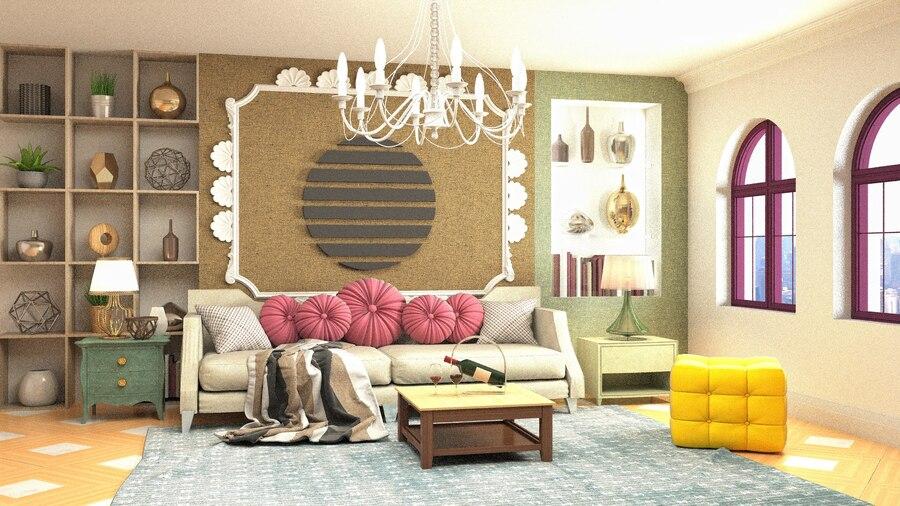 Cultural elements in decor
Cultural elements in decor
Latin American Brights: Incorporate the vibrant, bold colors found in Latin American cultures. Think bright blues, reds, yellows, and greens. These colors can be used in wall paint, cushions, throws, and rugs to create a lively, energetic space.
African Earth Tones: Use rich, earthy tones inspired by African landscapes and art. Colors like terracotta, ochre, deep greens, and browns can be incorporated through wall colors, pottery, and textiles.
Scandinavian Neutrals: Embrace the simplicity and elegance of Scandinavian design with a palette of whites, grays, and soft pastels. These colors create a calm, serene environment and can be used in furniture, wall paint, and decor items.
Asian Zen: Opt for the tranquil and balanced colors often found in Asian design. Use natural hues like bamboo green, stone gray, and cherry blossom pink. These colors work well in creating a peaceful, meditative atmosphere.
Moroccan Vibrancy: Bring in the rich, jewel-toned colors characteristic of Moroccan interiors. Deep blues, vibrant purples, and lush golds can be used in tiles, fabrics, and accessories to create a luxurious and exotic feel.
Indian Hues: Integrate the bright and intricate patterns of Indian textiles. Use colors like saffron, turquoise, magenta, and emerald green in fabrics, cushions, and wall hangings to add a touch of opulence and warmth.
Middle Eastern Patterns: Incorporate intricate geometric patterns and mosaic designs from the Middle East. Use patterned tiles, rugs, and cushions in colors like cobalt blue, gold, and deep red to add depth and texture to your space.
Mediterranean Blues and Whites: Embrace the fresh and airy palette of Mediterranean decor. Use shades of blue and white, reminiscent of Greek islands and coastal towns, in your fabrics, ceramics, and furniture to create a breezy, light-filled space.
Japanese Minimalism: Use the subtle and refined colors of Japanese design. Soft beige, light gray, and muted green can be used in wall colors, furniture, and accessories to create a minimalist, harmonious look.
European Elegance: Incorporate the classic and timeless colors found in European interiors. Use muted shades of blue, green, and gold along with neutral tones. This can be applied through wallpaper, upholstery, and vintage decor pieces.
Furniture Choices
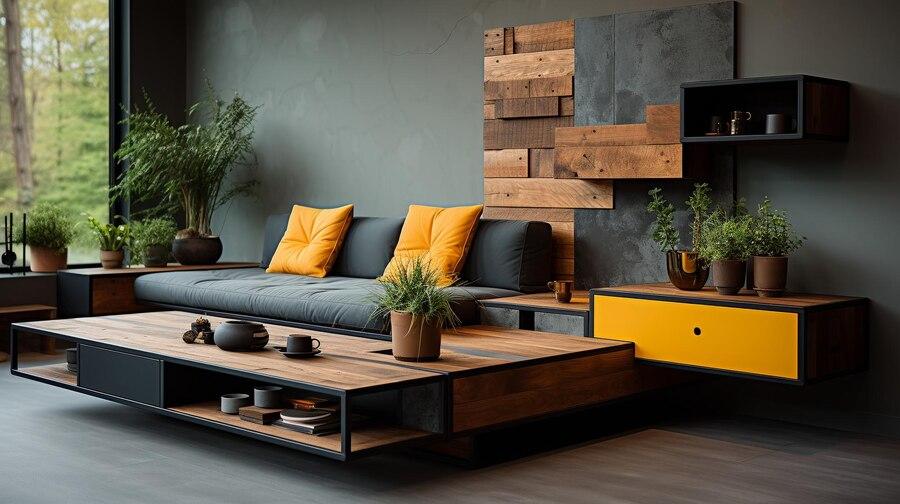 Multifunctional furniture
Multifunctional furniture
Eclectic Mix: Combine furniture pieces from different cultures to create an eclectic, globally inspired look. For instance, pair a Moroccan pouf with a Scandinavian-style sofa and a Japanese-inspired low table.
Vintage Finds: Incorporate vintage and antique furniture pieces from various regions. Look for items such as a Victorian-era armchair, an Indian carved wooden chest, or a French bistro table to add character and history to your space.
Handcrafted Pieces: Invest in handcrafted furniture that showcases traditional techniques and craftsmanship. Pieces like a handwoven wicker chair from Indonesia, a hand-carved wooden bed from India, or a Mexican Talavera-tiled table can add unique flair.
Sustainable Materials: Choose furniture made from sustainable and eco-friendly materials. Bamboo furniture from Asia, reclaimed wood pieces from Europe, and rattan items from Africa not only look beautiful but are also environmentally friendly.
Low-Seating Options: Incorporate low-seating furniture, which is common in many Asian cultures. Floor cushions, futons, and low coffee tables create a relaxed and intimate atmosphere.
Multifunctional Furniture: Opt for multifunctional furniture that is both practical and stylish. Consider a Moroccan ottoman that doubles as storage, a Scandinavian sofa bed, or a Japanese-inspired folding screen that can serve as a room divider.
Textile Upholstery: Use globally inspired textiles for upholstered furniture. A sofa covered in colorful kilim fabric, a chair upholstered in African mud cloth, or cushions made from Indian block-printed fabric can add texture and pattern to your decor.
Artisanal Details: Look for furniture with artisanal details such as inlays, embroidery, or hand-painting. These details can be found in Middle Eastern mother-of-pearl inlaid tables, Indian embroidered poufs, or Mexican hand-painted Talavera chairs.
Minimalist Design: Embrace minimalist furniture designs inspired by Japanese or Scandinavian aesthetics. Clean lines, simple forms, and functional designs create a serene and uncluttered environment.
Outdoor-Inspired Furniture: Incorporate furniture that brings an outdoor feel indoors. Consider using pieces like a bamboo daybed, a rattan hanging chair, or a wooden bench with a rustic finish to evoke a sense of nature and tranquility.
Textures and Materials
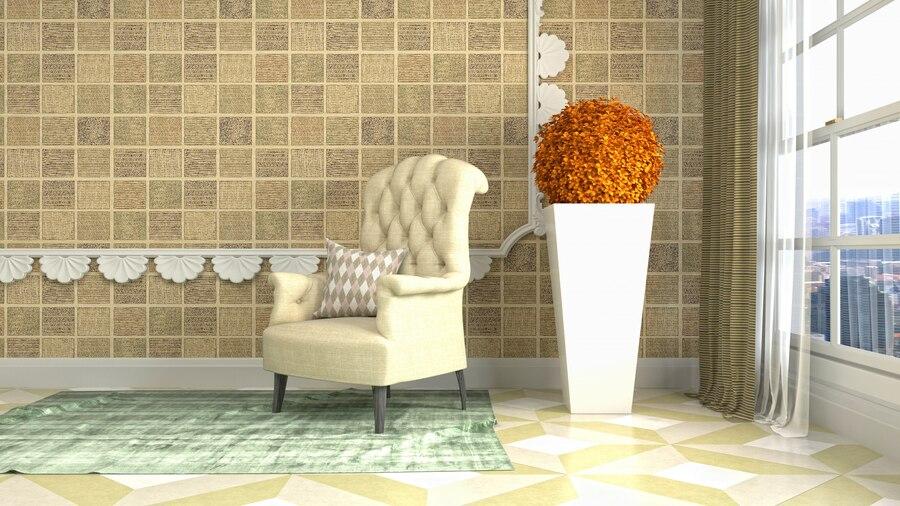 Natural materials in home decor
Natural materials in home decor
Natural Fibers: Utilize natural fibers such as jute, sisal, and bamboo. These materials are commonly found in rugs, baskets, and wall coverings from various cultures and add an organic feel to your space.
Wood: Incorporate different types of wood to reflect global influences. Teak from Southeast Asia, oak from Europe, and mahogany from the Americas bring warmth and texture to your decor.
Stone and Marble: Use stone and marble for countertops, flooring, and accent pieces. Italian marble, Indian granite, and African soapstone can add elegance and durability to your home.
Ceramics and Pottery: Display ceramics and pottery from around the world. Think of Japanese porcelain, Mexican Talavera tiles, and Greek pottery to introduce texture and cultural significance.
Textiles: Integrate textiles with rich textures such as Moroccan rugs, Indian silk curtains, and Peruvian alpaca blankets. These textiles can add color, warmth, and tactile interest to your space.
Leather: Incorporate leather elements like a Moroccan pouf, an Argentinian leather chair, or an Italian leather sofa to add sophistication and durability.
Metal: Use metal accents and furniture pieces. Consider wrought iron from Spain, brass fixtures from India, or copper accents from Mexico to add a touch of global industrial chic.
explore further
Latest from DIY hacks
More from Interactions
Resources
Dwello, for every home buyer, is a way to go from 'I feel' to 'I know', at no extra cost.




